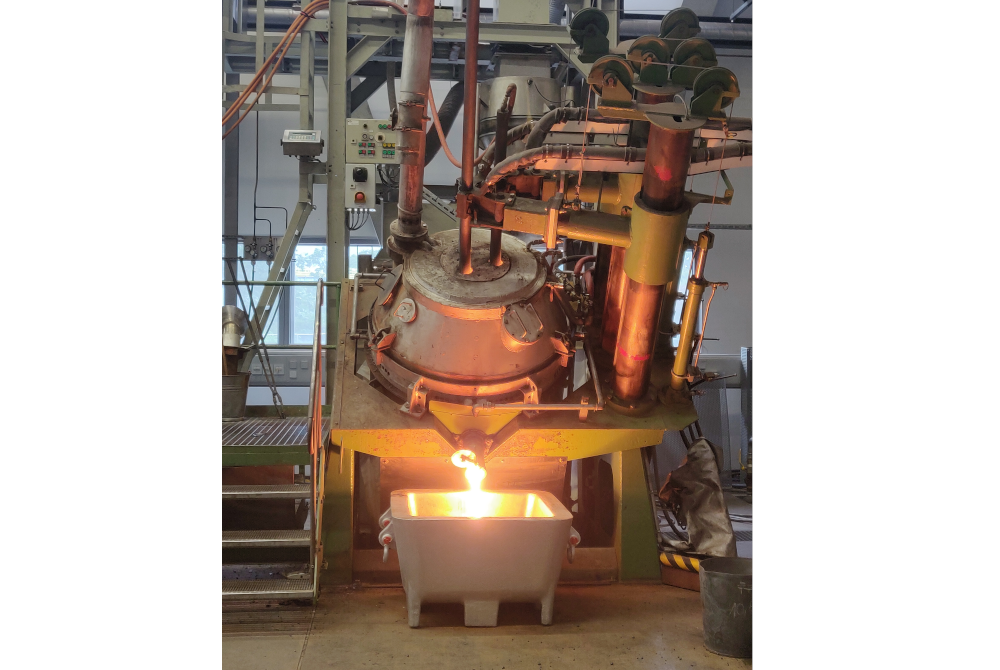
Casting of a low-iron steelwork slag reduced in a semitechnical-scale arc furnace
Source: BAM
In the context of reducing CO2-emissions, the cement industry is looking for ways to replace raw materials with industrial residues. Due to the strong chemical similarities between a cement clinker as the most important component in cement and a steelwork slag produced during the production of crude steel, their utilization in cement production is currently the focus of various research activities. Fused cement clinker can be produced from molten steelwork slags (in this work: basic oxygen furnace slag - BOFS) via a reductive thermochemical treatment. During the process, oxidic iron is reduced to metallic iron and separated. It can be reused as metallic raw material in the steel industry. The resulting low-iron slag has a chemical and mineralogical composition similar to ordinary Portland cement clinker. However, the hydraulic reaction of the fused clinker is considerably slower than that of ordinary Portland cement but can be accelerated by adding gypsum as a sulfate carrier. Foreign ions such as iron, phosphorus or manganese incorporated in the mineral phases have a significant influence on the setting behavior: the reaction rate increased with decreasing content of foreign ions.
The hydraulic reactivity of the fused clinker from basic oxygen furnace slag, a synthetic fused clinker without foreign ions and fused clinker produced by a mixture of both materials was studied with and without addition of gypsum Although the process of a reductive treatment of molten slags is not yet established in the steel industry due to technical challenges, the results of this work show the potential of steelwork slags as hydraulic active components in cement. Currently, untreated slag is used in low-grade applications, e.g. in road construction, where its raw material potential is not fully utilized, or even have to be dumped. Replacing clinker with reduced slag would not only save primary raw materials but also make a decisive contribution to reducing the cement industry's greenhouse gas emissions. However, further investigations are required to determine the actual mechanisms controlling the reactivity of fused cement clinker.
Effect of gypsum on the hydration of fused cement clinker from basic oxygen furnace slag
Katharina Schraut, Burkart Adamczyk, Christian Adam, Dietmar Stephan, Birgit Meng, Sebastian Simon, Julia von Werder, Tamino Hirsch, Tanja Manninger
Advances in Cement Research, Volume 36 Issue 2, 2024, pp. 64-82


